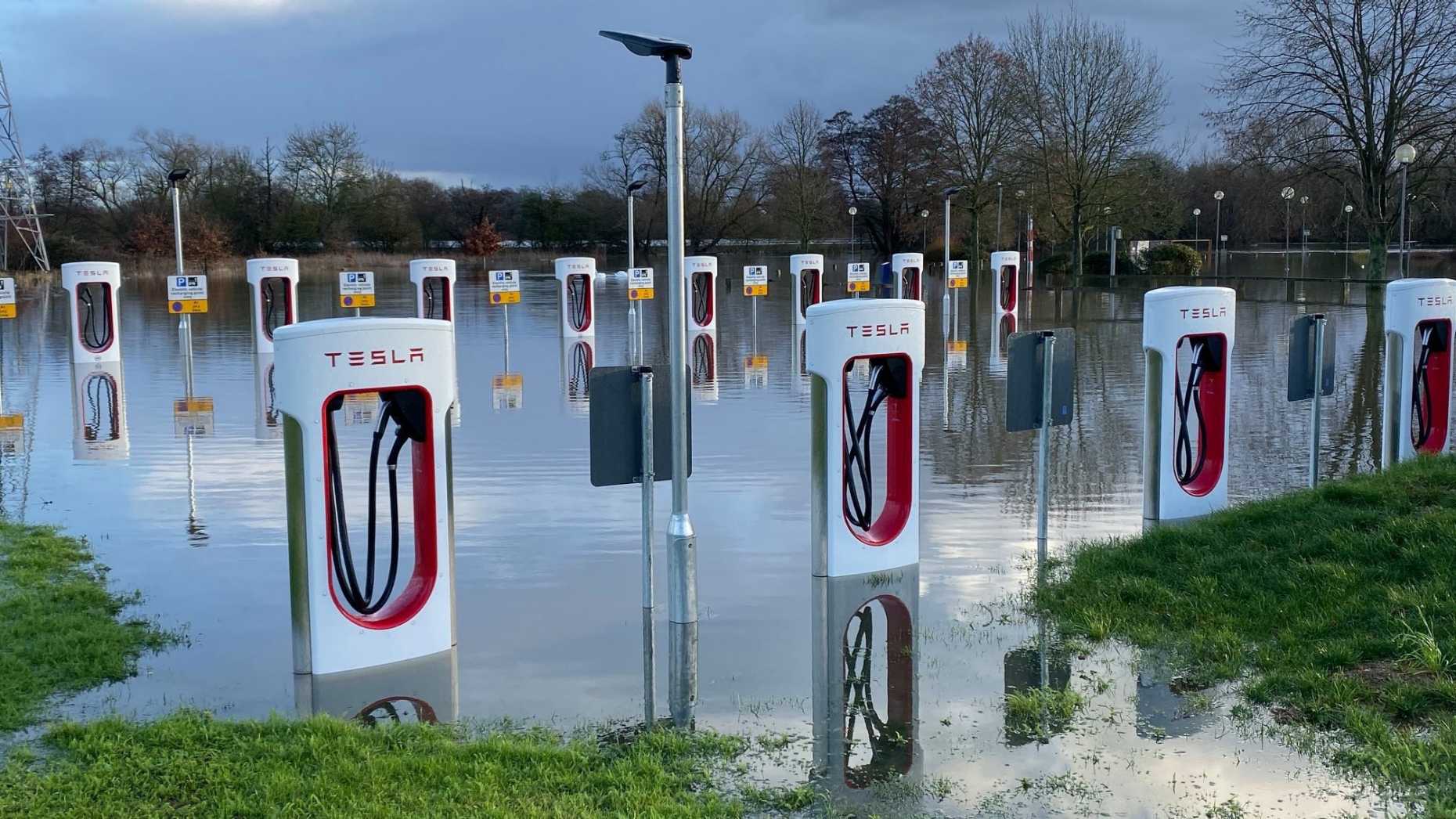Flood resilience of urban electric vehicle charging networks
FRS researchers study the effects of flooding on electric vehicle (EV) infrastructure, drivers and the local network, and propose ways to bolster the resilience of EV networks.
Transportation electrification is a cornerstone in achieving sustainability targets. With nations setting deadlines as early 2030 for achieving 100% personal electric vehicle (EV) sales, it is critical to have an adequate public charging infrastructure and importantly, one that is resilient to external shocks, to promote public confidence and encourage EV adoption and continued usage.
In their new paper published in Nature Communications, FRS researchers Dr. Gururaghav Raman, Dr. Gurupraanesh Raman, and Prof. Jimmy Chih-Hsien Peng investigated for the first time an important shock: flooding. With the frequency and intensity of floods ever increasing due to climate change, significant portions of existing EV charging networks are vulnerable to flooding, as their case study of Greater London shows.
Observing the impact of flooding on charger accessibility and availability to drivers, the researchers show that the impact will be felt not just close to the flooded regions, but that it peaks much farther (over 10 km) away. Furthermore, they find the stresses brought about by flooding are concentrated on already-stressed areas. This means that specific localities would get overwhelmed by demand during floods, a result that is also likely applicable to other cities such as Singapore. Ultimately, repeated seasonal flood events may discourage drivers in these areas from adopting EVs.
Finally, the researchers provide policymakers recommendations to build the flood resilience of EV charging infrastructure. These include measures such as enhancing support infrastructure, ring-fencing potential areas of flood risk and a random placement strategy subsidised by government support.
G. Raman, G. Raman, and J. C.-H. Peng, "Resilience of urban public electric vehicle charging infrastructure to flooding", Nature Communications, 2022. external page https://doi.org/10.1038/s41467-022-30848-w.
